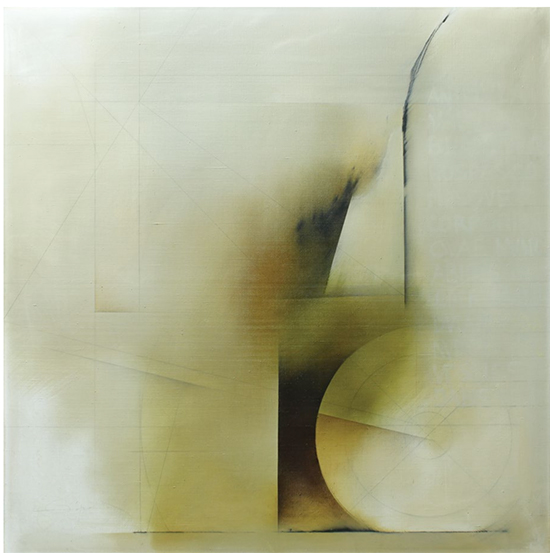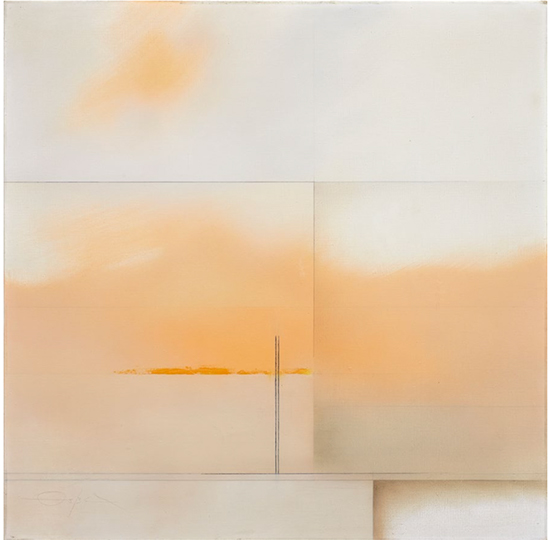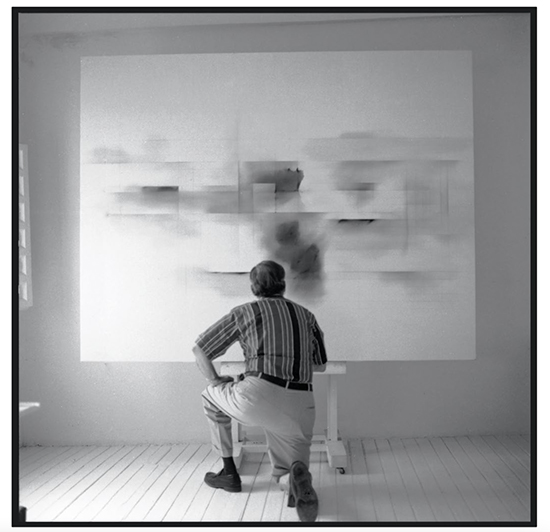Signs and portents: The Golden Age of Fernando Zóbel
A new exhibit at León Gallery International, titled Fernando Zóbel: The 1970s throws light on an important—yet little-known—decade in the artist’s life. Its Madrid-based curator Adolfo Cayón says that it was a magical period when Zóbel was “most comfortable in his own skin.”
“This was the time when Zóbel’s art was most free and most personal,” he declares. “It was suitably also an age of color.”
Cayón had flown to Manila to personally hang the landmark show composed of less than a dozen works. Stepping into the space was a Zen-like experience, with the paintings appearing to be fragments of memories or dreams or clouds floating past interchangeably.
Cayón believes the paintings are powerful testimony to Zóbel’s qualities as a “true Renaissance Man” with interests in all seven of the arts.

They allude to music, history, and personal experience. Cayón believes the paintings are a powerful testimony to Zóbel’s qualities as a “true Renaissance Man” with interests in all seven of the arts. El Triunfo del Cesar (The Triumph of Caesar) suggests Mantegna’s historic work replete with ghostly Latin words written in shadow; Tarancon-Gasolinera (Tarancon Gas Station) recalls a favorite meal of potato pancakes on the way to his beloved Cuenca; Pequeño Homenaje a Stravinsky (A Little Homage to Stravinsky) is about freedom within a stylized structure of graphite gridwork.
“The ’70s for Zóbel is relatively under-appreciated by Manila collectors who are most familiar with his Serie Negra (Black Series) paintings, but the works in the exhibit show a Zóbel that is totally unexpected, subtle, sweet and somehow fleeting and sophisticated,” said Jaime Ponce de Leon, director of León Gallery. “They have become my instant favorites.”
The stellar roster gathered for the exhibition includes Juan Manuel Bonet, the former director of the Reina Sofia Museum in Madrid, who contributed an authoritative curatorial essay on Zóbel. Bonet has curated exhibitions from Juan Gris to Pablo Picasso. He is, in fact, considered one of the foremost experts on Spanish art of the 20th century. Bonet has also written several books devoted to various artists and is a published poet.
One unseen presence in the show, however, was Rafael Peréz Madero, to whom the exhibit was dedicated. Peréz Madero was both collaborator, co-conspirator, critic, and the staunchest keeper of Zóbel’s flame. He was a scholar dedicated to the study of Zóbel and, until his recent unexpected death, was widely acknowledged as the man with the deftest command of the artist’s works.

Fernando Zóbel himself would leave an indelible mark on both Spanish and Philippine modern art—not least of all through his establishment of a museum in the town of Cuenca, as well as his contributions to both the Ayala Museum and the Ateneo Art Gallery.
He continues to make his presence felt in more ways than one.
Mrs. Georgina Padilla y Zóbel, the administrator of the Fernando Zóbel estate alongside her brother Alejandro, shared this touching reminiscence: “In 1997, a curious event happened: just as we were about to enter the abbey of San Isidro for Tio Fernando’s anniversary Mass, which yearly is set at 12 noon sharp,” she remembers, “we looked up at the bright, limpid sky and, to our great surprise, we all saw a pure white trail, like sea foam, drawing an enormous white circle, and a horizontal white line crossing the circle, in the blue sky.

“The plane was slowly drawing Zóbel’s white signature—a large circle with a line across it—in the blue sky, not only once, but three times! Not quite believing what we were seeing, we took pictures against the sun, our cameras trembling in our hands, unsure if it was a mirage,” she remembers.
Mrs. Padilla continues, “Up to now, many years later, this happening remains a mystery. It was reported in the town’s newspaper and was also broadcast on the radio; and all the townspeople of Cuenca began to search (to find out) who the pilot was. However, all the airports and airstrips, big and small, nationwide, denied having in their flight records a small plane departing towards Cuenca at that time, and on that day.”
Zóbel would pass away in 1984, just a few months short of his 60th birthday. He continues to make headlines to this day, with a planned exhibition titled “Fernando Zóbel and the History of Art” at the Prado Museum in Madrid, which is expected to open on Nov. 15th, 2022. It will feature the author’s sketchbooks in dialogue with the Prado’s classic collection of works, from which the museum news report says, “He built his own abstract imaginary.”
* * *
“Fernando Zóbel: The 1970s” may be viewed now at León Gallery International at Corinthian Plaza, 121 Paseo de Roxas in Legazpi Village, Makati and runs through the duration of Art Fair Philippines until April 1.


